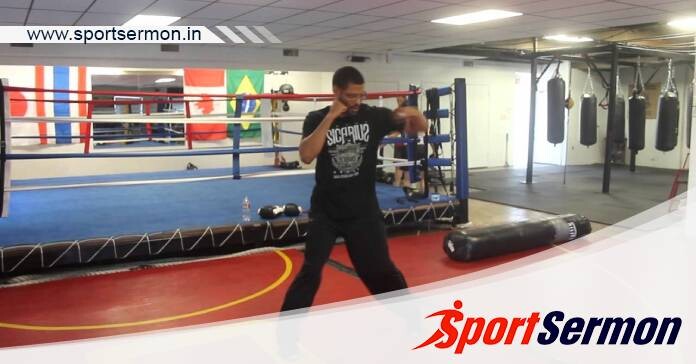Punch Number System: Due to its annual global revenue of billions, boxing is undoubtedly the most advanced fighting system in existence. Because there is so much money at stake, even governments, like as the regime of Fidel Castro, have made large financial commitments to improve the sport in an effort to develop fighters who are among the best in the world.
There is much more to boxing than just hurling punches at your opponent and hoping you land something big before them. It takes years to become an expert in this lovely discipline.
Knowing The Punch Number System in Boxing
Boxing names punches using a straightforward numerical system. Teaching methods and combinations become simpler when this is done. For example, in boxing, there are lead and rear hooks that are employed, so just ordering a fighter to throw a hook doesn’t convey your full intention. Complicating matters further, the fighter you are training may have a lead and a rear hook that are either hand depending on how they are positioned. When you are in an orthodox stance, your right hand is your back hook; when you are in a southpaw stance, it is your left hand.
Regardless of a fighter’s posture, coaches can communicate their desires to them using the number system.
The boxing number system is as follows:
- Jab
- Cross
- Lead hook
- Rear hook
- Lead uppercut
- Rear uppercut
The jab, cross, hook, and uppercut are the four primary punch types employed in boxing, despite the punch number system including six punch kinds. All of these punches are covered by the six-punch number system, which also indicates which hand is used for the attack.
Punching is done using an even-numbered strike method with the right hand and an odd-numbered punch with the left. The conventional worldview served as the basis for the development of this strategy. Punch counts are a tool that boxing trainers occasionally use to monitor how many punches are delivered during training. The following are a few of the most typical boxing combinations:
- 1-2 = Jab – Cross
- 3-4 = Lead hook – Rear hook
- 5-6 = Lead uppercut – Rear uppercut
In order to better understand their instructor’s directions during workouts, beginner boxers might benefit from learning the six-punch number system. Now that you have a basic understanding of the boxing punch number system, let’s look at the keypunches and how they are delivered.
You might also be interested in reading this: Crucial Drills for Solo Boxing at Every Level
-
The Jab
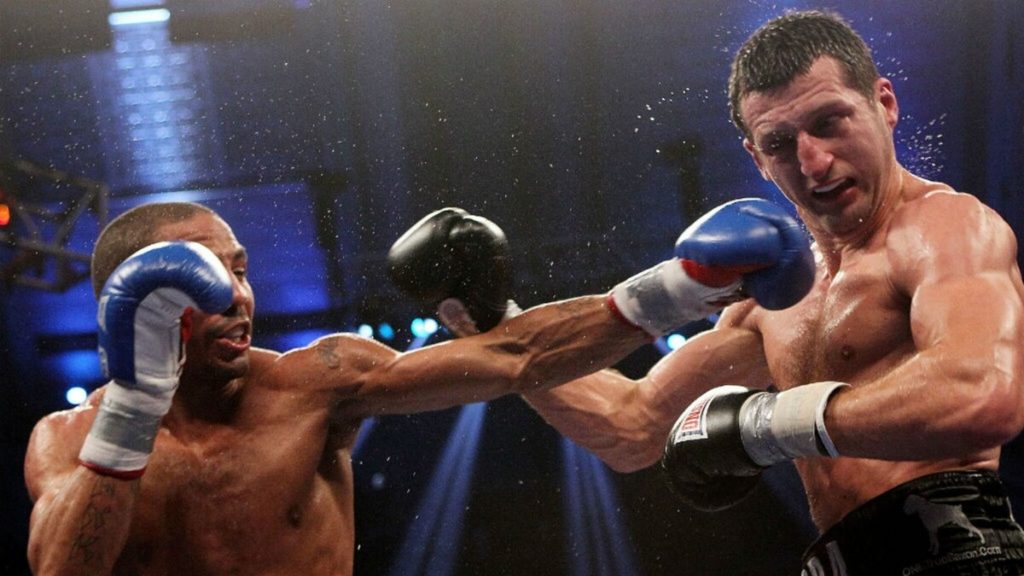
The most common strike in boxing, the jab is the first punch in the six-punch number system. When thrown correctly, it leaves no substantial vulnerabilities in your defence, making it the safest weapon you have.
The jab is commonly employed for combo setup and as a rangefinder. The fundamental principle of the jab, which has several variants, is that it is a straight strike delivered with the lead hand.
Here’s how to deliver a sharp jab:
- Put your hands in a guard posture and assume your combat stance.
- Hold your fist at the beginning of the lead hand as you extend it forward. Your hand should not be moving up or down. Your fist should remain at the same level as it did when you were on your guard. Punch speed is increased, and returning your hand to your guard is facilitated.
- After landing the blow, quickly raise your hand to your guard to fend off any counterattacks.
- Practise your jab-throwing technique as quickly as you can when you get the form down.
2) The Cross
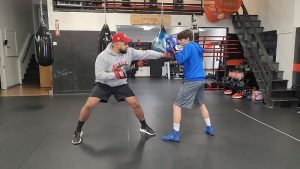
The cross is your second hit after the jab, and because it’s performed with your stronger (back) hand, it’s far more powerful than the jab. It’s your second safest punch in your toolbox and a distance weapon. a powerful cross with sufficient strength to conquer the territories of enemies.
This is how a cross is thrown:
- Put your lead hand slightly in front of your chin and your rear hand close to it as you assume your boxing stance.
- Rotate your hips, pivot on your rear foot, and reach out your arms in the direction of your adversary.
- After making contact, return your hand to your face and twist your torso back to the beginning position.
3) Lead Hook

One of your stronger blows is the lead hook. It may be utilised at medium to close range and creates power from your torso and legs. Since you use your weak hand to deliver the punch, it’s one of the most difficult power punches to learn. So that the method feels natural to you, practise it frequently.
How to execute a lead hook:
- Put your hands in a guard posture and assume your combat stance.
- As you deliver the strike, shift your weight off your lead foot and spin your torso.
- When you throw the punch, maintain a 90-degree bent elbow and deliver it on the same plane as your shoulders. As you execute the blow, your elbow should stay at that angle.
4) The Rear Hook
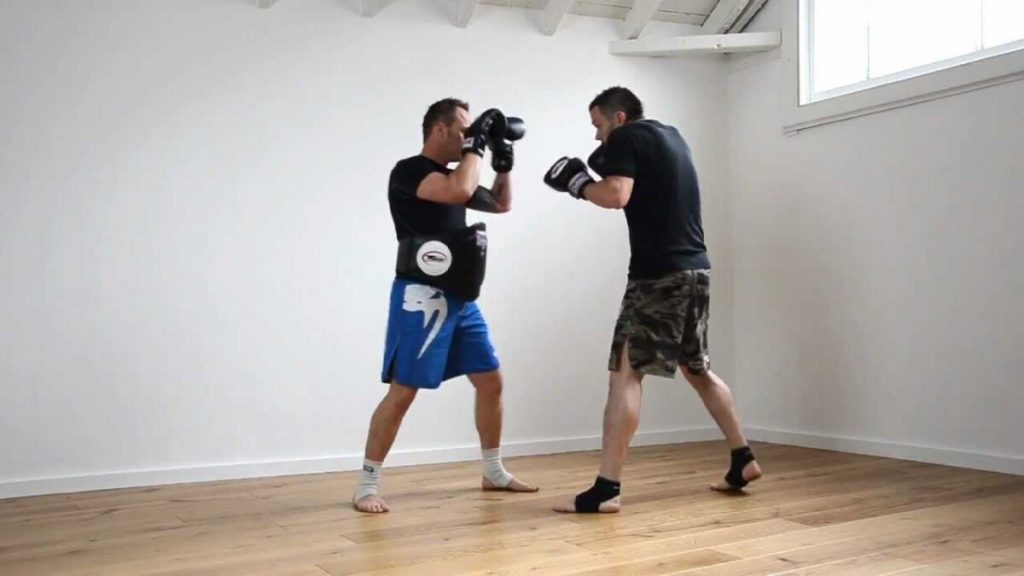
Although it is the strongest hook you have, the rear hook can only go so far before giving way to the lead hook. This approach has more than enough force to subdue adversaries. In close quarters, it works best.
Throwing a back hook is done as follows:
- Assume a boxing stance and raise your fists to your faces.
- Raise your back arm to the level of your shoulders and bend your elbow to create a 90-degree angle with your upper and lower arms.
- As you deliver the blow, pivot on your back foot and spin your hips and torso. Until you make contact, keep your elbow bent at a 90-degree angle.
5) The Uppercut Lead

Lead uppercut: This punch is also quite effective at close range. Because of its upward trajectory, the punch is more difficult to block. You push your fists upward into your opponent using the force from your torso and legs.
This is how the method appears:
- Assume a boxing stance.
- Drop your lead arm so that it makes a 90-degree angle with your torso and bend your knees to go into a three-quarter squat.
- Keep your elbow bent and use the force from your knees to press your fist into the target.
6) The Uppercut in Back
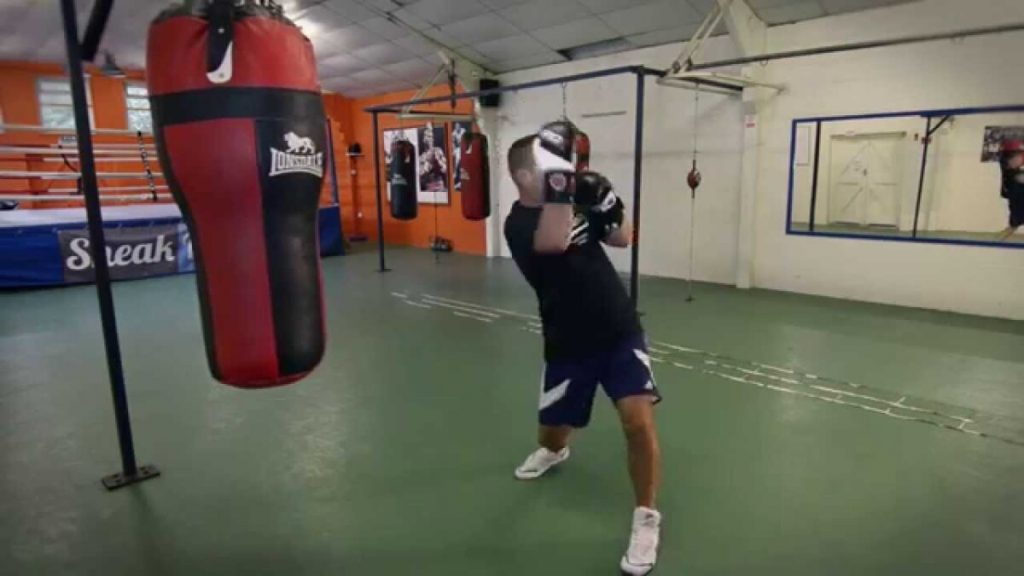
The strongest weapon in your arsenal is the rear uppercut. When your opponent can’t see your hand behind their protection, it works best up close.
How to execute a back uppercut:
- Lower yourself into a three-quarter squat and lower your backhand until it is 90 degrees from your body.
- Drive your hand upward into your target while pivoting on your back foot and rotating at the hips.

